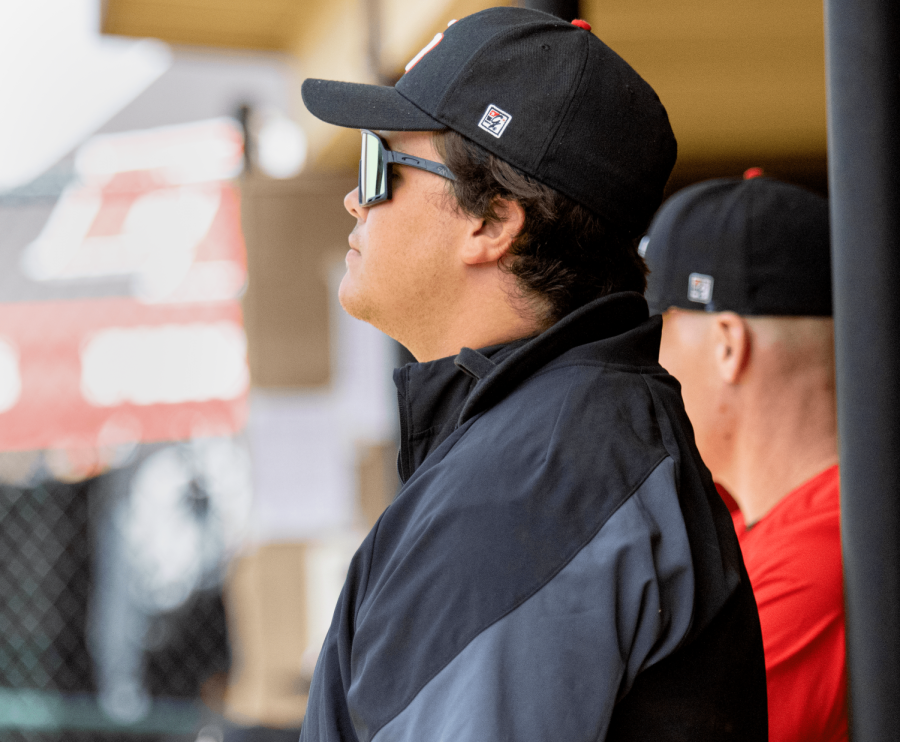A single empty brown leather chair, notably vacant amidst a sea of members of Congress serving as the audience to President Barack Obama’s second State of the Union address, signified the absence of Representative Gabrielle Giffords (D-Ariz.), the target of the shooting in Tucson that took six lives and wounded 14 others.
Also notably absent was the call for reasonable gun control legislation in the wake of the Jan. 8 massacre, which, at least for a fleeting moment, raised issues concerning mental health awareness, the availability of firearms and the fiery, incendiary rhetoric permeating the current American political sphere.
Obama’s adroit avoidance of the volatile subject that is “gun control” was undoubtedly a shrewd, calculated move designed to deflect the ire of the new Republican majority in the House. The president, not unaware of the reality of American politics dominated by special interests, instead chose to touch on the Tucson tragedy as a unifying moment for Americans, one that transcends the boundaries of party affiliations and preferences.
Whatever his motives, the notable omission of any call for reasonable, responsible gun control is detrimental to American society, no matter the political cost of wrangling with Congress’ new majority.
The Second Amendment to the Constitution grants American citizens the right to bear arms—the context under which this right is granted can be interpreted in numerous ways—but, for the sake of argument, we won’t argue.
Still, the ease that Jared Lee Loughner, the alleged Tucson shooter, was able to purchase a Glock 19 semiautomatic handgun with a 32-round extended clip should be a concern for any American. After all, allowing a civilian the right to purchase, own, and, in some cases, carry a firearm with that killing capacity seems not only irresponsible, but unnecessary.
In the interest of self-defense, a handgun would undoubtedly prove adequate to one’s needs. However, it is worth pointing out that a pistol, regardless of size or magazine count, is expressly designed for taking the lives of other human beings—a shotgun or rifle can be used for hunting, as well as self defense.
The gun lobby, headed by the National Rifle Association, has consistently maintained that an armed citizenry, given reasonable safety training and education, is an effective deterrent to crime. An armed criminal, so the reasoning goes, will be less likely to commit a crime knowing that his or her fellow citizens might also be brandishing firearms.
This reasoning is specious at best. After all, no matter what the circumstance, the average civilian gun owner is unlikely to have the proper training or experience necessary to handle the extreme stress of a gun battle—indeed, police officers and combat soldiers receive rigorous, thorough training, and even then, friendly fire incidents and firearm accidents still occur.
After the Tucson shooting, Arizona legislators pushed to further loosen existing gun laws, allowing citizens extended rights to carry concealed firearms, and even to introduce legislation allowing community college instructors and students the right to concealed carry guns in the classroom.
This same skewed logic followed the 2007 Virginia Tech massacre, which claimed the lives of 32 students and professors. Research by the University of Pennsylvania has shown that an individual possessing a firearm in an assault is 4.5 times more likely to be shot than one who does not possess one.
Allowing ordinary citizens the right to carry a firearm is inherently dangerous. During the Tucson shooting, Joe Zamudio, shopping in a nearby drug store, was one such citizen, “packing heat” during the chaos.
Zamudio, who was celebrated by the media for helping subdue Loughner, found himself deactivating the safety on his 9mm handgun, and nearly drew it on a person he found holding a gun.
Only, in this case, Zamudio found that he had the wrong man—the citizen he nearly fired upon was the one who had disarmed Loughner.
“I had my hand on my gun,” said Zamudio, in an interview on Fox News. “I had it in my jacket pocket here”
Fortunately, Zamudio had the sense to restrain himself instead of firing indiscriminately at a person, who, to his knowledge, may very well have been the shooter.
“I was very lucky,” he said. “Honestly, it was a matter of seconds.”
Zamudio deserves to be lauded for his rational response in the face of overwhelming distress, but his restrained, cautious approach cannot be universally applied. After all, no individual could predict his or her reaction to a similar situation, where the line between suspect and bystander is so easily distorted in the face of an immediate, violent confrontation. Certainly, the responsible use of a firearm for defensive purposes can occur, but the University of Pennsylvania’s study states that “Although successful defensive gun uses can and do occur, the findings of this study do not support the perception that such successes are likely.”
Can gun control realistically be used to combat crime and reduce the likelihood of further tragedies like Tucson, Columbine, Virginia Tech or Fort Hood? There are an estimated 240 to 270 million firearms available among the U.S. population—about eight or nine firearms per 10 people—and attempting to banish them from the public sphere is an impossibility.
Still, we should not abandon the idea of a nation without firearms, or at least, a nation that takes active steps to reduce the availability of these instruments of death. Gun lobbyists perennially play to the fears of gun owners, touting the government’s impending crackdown and confiscation of guns, and reminding us “if you outlaw guns, only outlaws will have guns.”
Investigative reporting by the Washington Post also reveals that the lax gun laws in Arizona not only allowed the Tucson shooter to obtain his instruments of death, but have resulted in thousands of legally available firearms—including AK-47s—being transported to Mexico for use by drug cartels. Guns from the U.S. are used expressly for murdering police and public officials in our neighbor to the south.
President Obama, however, despite his campaign promises in 2008 calling for a reinstatement of the assault weapons ban that lapsed in 2004, has chosen to sidestep the delicate issue of Second Amendment rights. Indeed, the government, even under Democratic rule, has failed to pass any gun control legislation since 1993.
The allowance for extended-round magazines is a direct part of the now-lapsed assault weapons ban, and resulted in Loughner’s being able to purchase both the Glock 19 and the 32-round clip in the same purchase, on the same day.
While conservative, pro-gun groups point to the fact that Loughner was “mentally deranged,” and an outlier among responsible, rational gun owners merely exercising their Second Amendment rights, they neglect to recognize the extreme “Second Amendment remedies” touted by their followers, who, over the past two years, feel it necessary to attend political rallies brandishing handguns and assault rifles, all to prove an oblique point that carries more than the mere hint of violence.
The Constitution grants Americans the right to bear arms, and we certainly do not oppose or challenge that. However, what constitutes a reasonable necessity to possess a weapon capable of ending human life remains a valid question.
The United States has over 8,000 homicides by firearms per year, far above similar rates in nations comparable in living standards, and yet Americans remain desensitized to the lives taken by fellow Americans—indeed, we seem to pay close attention only in case of spree killings, like Tucson, or when such murders are carried out by foreigners.
Violence carried out by Americans upon Americans, however, remains white noise to a populace so accustomed to murder. Stricter regulation, background checks, and licensing would be a necessary obstacle to preventing weapons capable of causing mass suffering and death from falling into the wrong hands.
It’s not impossible. No one is saying “take all the guns away”—that would be entirely unrealistic, as well as an infringement of Second Amendment rights.
But denying criminals the chance to legally obtain firearms that would be used to commit crimes and perpetrate suffering seems like a reasonable first step. Must it always require tragedy for us to understand these things?










